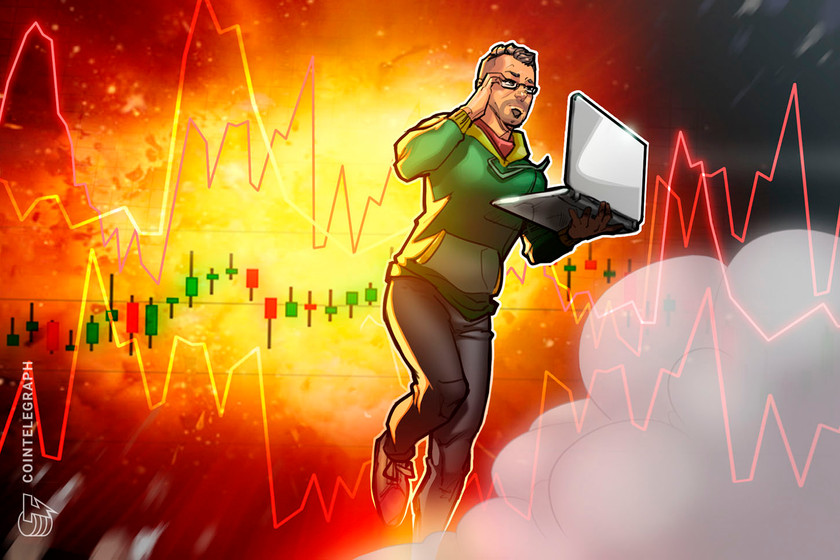
AXS may form a death cross between its 20-day and 50-day exponential moving averages, despite the latest rebound.
Axie Infinity’s native cryptocurrency, Axie Infinity Shards (AXS), bounced higher on Sept. 23 as the market’s focus shifted to its listing on two major crypto trading platforms, Bitfinex and Bitstamp.
The AXS/USD exchange rate surged 15.52% to $69.86, negating all the losses that it incurred at the beginning of the week. The intraday rally came as a part of an overall bullish retracement that began on Sept. 21 when AXS was changing hands for $48.05.
Crypto assets recover
On Sept. 20, markets were on edge due to looming economic trouble in the Chinese property market surrounding Evergrande, which is massively indebted yet the largest builder of homes. Fearing a 2008-like housing bubble scenario, investors precautiously shifted their capital out of the stock market and sought haven in the U.S. dollar.
Are Evergrande’s debts denominated in Crypto? pic.twitter.com/YAoqBVx2Rk
— Michael Batnick (@michaelbatnick) September 21, 2021
The crypto market ended up mirroring the moves of the global stock markets, with top digital assets Bitcoin (BTC) and Ether (ETH) ending up near multi-week lows. As a result, other top tokens also fell in tandem, with AXS diving from $63.99 on Sept. 20 to as low as $48.05 on Sept. 21 — a 24.55% price decline.
However, entering Sept. 22 and 23, almost all the top crypto assets recovered in sync. So, it appears AXS merely followed the trend. Still, its apparently stronger fundamentals, especially the addition of trading pairs on Bitfinex and Bitstamp, made it perform better than most of its top rival tokens.
HUMAN Protocol, Axie Infinity and Polygon will be listed on Bitfinex!
— Bitfinex (@bitfinex) September 20, 2021
HMT (ERC-20), AXS (ERC-20) and MATIC (mainnet) deposits are now open. Trading for @human_protocol, @AxieInfinity and @0xPolygon on #Bitfinex will start from 21/09/21 at 9:00 AM UTC⬇️https://t.co/jawz5VuLq8 pic.twitter.com/Yk6LT1Ub6E
For instance, BTC/USD bounced more than 3% in the past 24 hours, whereas AXS/USD rose more than 8.5% in the same timeframe.
Technical setup
The latest bout of AXS buying has helped to evade potential death cross threats — for now.
Namely, AXS/USD’s 20-day exponential moving average (EMA) risks slipping below its 50-day exponential moving average. Analysts typically perceive a short-term MA closing below a long-term MA as a “sell” indicator, dubbed a “death cross.”
For instance, the chart below shows that the previous 20-day and 50-day EMA bearish crossover was followed by a 50-plus percent price decline.

Offsetting the death cross setup is AXS/USD’s daily relative strength index (RSI), a price momentum indicator that recently bounced off its nearly oversold level, signaling the pair’s likelihood to move higher in the coming days.
Related: Altcoins see a 35% bounce after Bitcoin reclaims $43,000
The upside analogy receives an additional boost from the psychological support level near $51.90. Traders have lately used said price floor as their point of entry to A, as shown in the chart below.

As a result, slipping below $51.90 could trigger the death cross setup, with the next support target for bears appearing at $36.47, as per the Fibonacci retracement setup. On the other hand, holding above said price floor could have bulls test $76.59 and $88.98 as their next upside targets.
The views and opinions expressed here are solely those of the author and do not necessarily reflect the views of Cointelegraph. Every investment and trading move involves risk, and you should conduct your own research when making a decision.






























